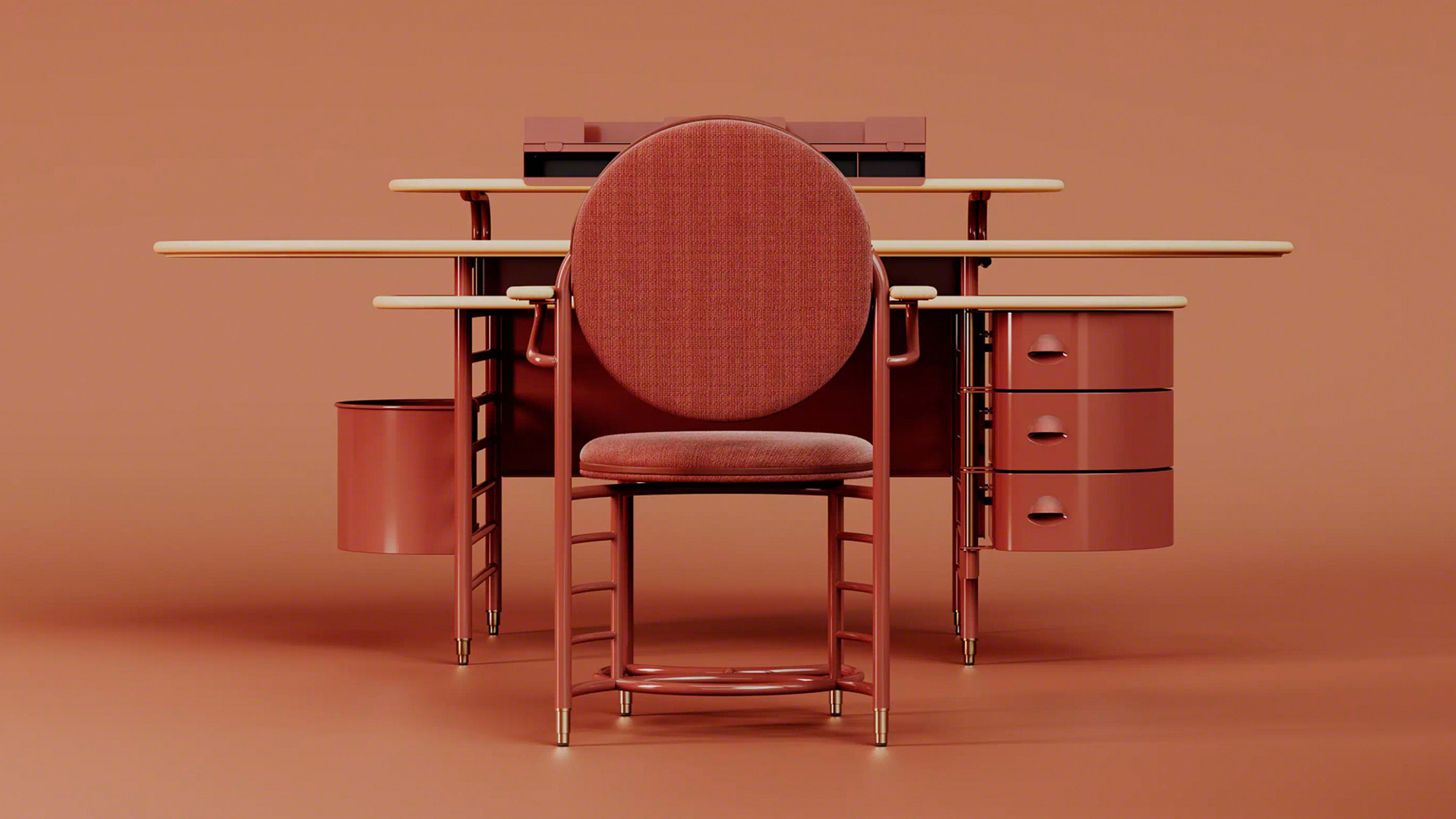If you know your Frank Lloyd Wright history, 1939 is probably engraved in your mind as the year the now-iconic SC Johnson Administration Building opened in Racine, Wisconsin. With its striking “lily pad” columns and open, circular elevators, the building was an overnight architectural sensation that ushered in a wave of open-plan offices.
But it wasn’t just about the building. As Wright often did, he also filled the space with custom-made furniture he designed himself. And those who can’t experience it in person have the option now of owning a small, yet crucial, piece of the building’s history.
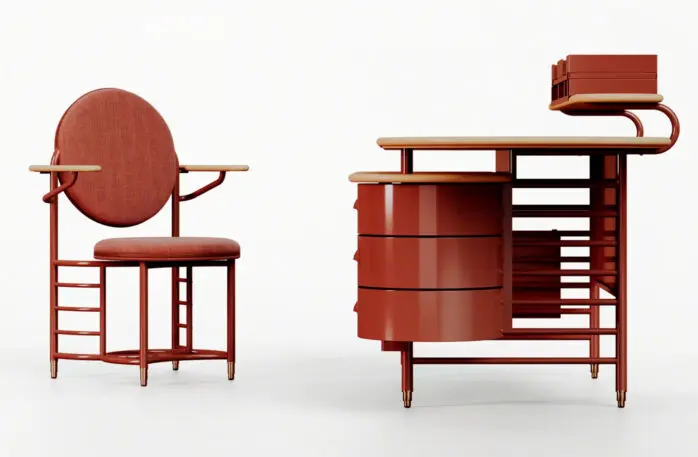
The Frank Lloyd Wright Foundation, which Wright himself established 19 years before his passing in 1959, partnered with furniture manufacturer Steelcase to reimagine some of the furniture pieces that Wright designed specifically for the Administration Building. The collection, titled Racine, includes an 84-inch $9,750 “signature” desk with smooth round corners and snazzy swiveling drawers, a smaller writing console (starting at $2,610), and a lounge chair ($2,609) that was only produced in small numbers for the building’s executive offices. (The original pieces were also manufactured by Steelcase, then known as The Metal Office Furniture Company.)
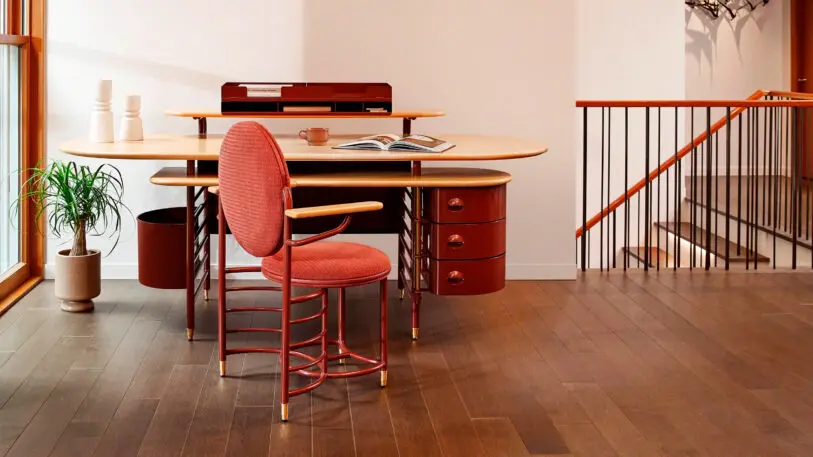
Each piece looks like a memento of Wright’s legacy—engineered, but stunning nonetheless. But what’s particularly interesting is the design process that went into bringing these pieces from the 1930s to the 21st century while keeping Wright’s spirit alive and well inside them.
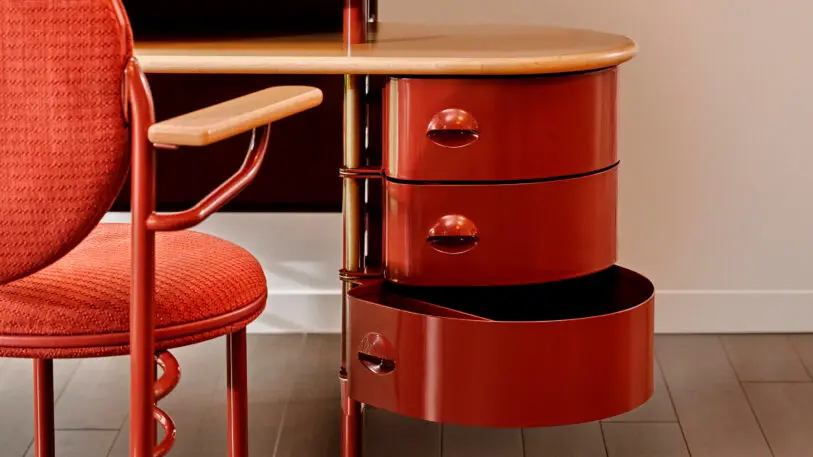
The first big update is where the Racine pieces are designed to live. Wright originally designed the furniture for a very traditional office setting, but Racine is intended for those who work at home. Wright designed each desk and chair to match the aesthetic of the building, but also for the specific kind of work that SC Johnson employees were doing, with custom cutouts to make room for early-computing machines, and a special filing system at the back. He even designed the desk’s drawers so that they swivel open and “meet” the user where they’re sitting.
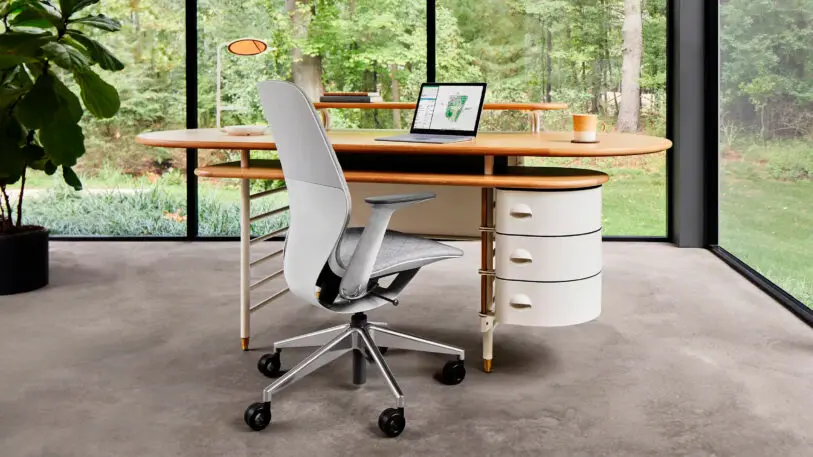
The modern version of the desk performs a little differently. Aside from the drawers, which swivel in the same way, many features from the original desk had become obsolete. For the updated desk, the designers, led by Steelcase and the Frank Lloyd Wright Foundation, got rid of the cutouts and redesigned the filing system at the back to work as a monitor stand. For the chair, they developed a tightly woven textile that looks like the original, but is durable enough to be used in commercial settings (even though the collection is meant for the home.)
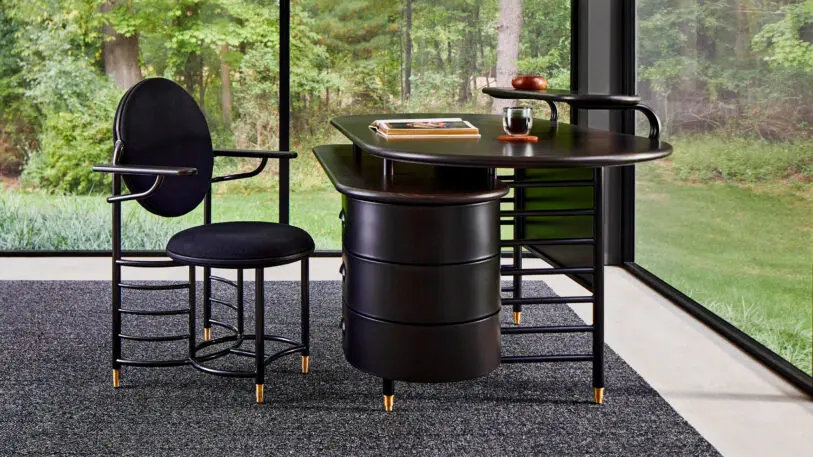
The designers also increased the height of the desk since humans are taller today, developing a range of customizable options and sizes to give the modern consumer more buying options. “The executive desk is this massive thing,” says Stuart Graff, president and CEO of the Frank Lloyd Wright Foundation. “If you’re in a New York apartment, it’s probably bigger than your apartment, so there’s a small 24 x 42-inch writing console desk that’s available.”

Naturally, the colors changed, too. Wright’s original furniture came in a warm maroon shade, with maroon upholstering, but consumers can now choose between “obsidian black,” “warm white,” “burnished bronze,” and the exact same shade of maroon, which the team color-matched to the original and named “Racine red.” (Trade professionals can choose from a palette of 21 colors, which were picked based on a photo that was taken just after Wright passed away, of all the colored pencils he kept in his desk.)
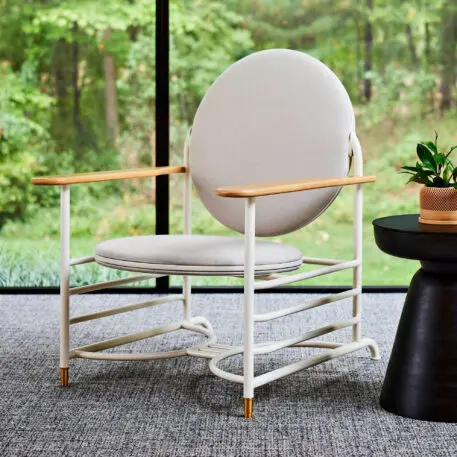
Perhaps most emblematic of the evolution is the Racine chair, which of course looks nothing like your typical, contemporary office chair. As Steelcase general manager of ancillary merchandising and partnerships Meghan Dean says, the meaning of ergonomics and workplace well-being were radically different in the 1930s than they are now. For those who want the ergonomic machine they can spend hours sitting on, Steelcase has their own seating portfolio, but the Racine chair was designed for “more occasional or home residential use.” After all, Dean says, “it is reflective of the time it was designed.”
Recognize your brand’s excellence by applying to this year’s Brands That Matter Awards before the early-rate deadline, May 3.
